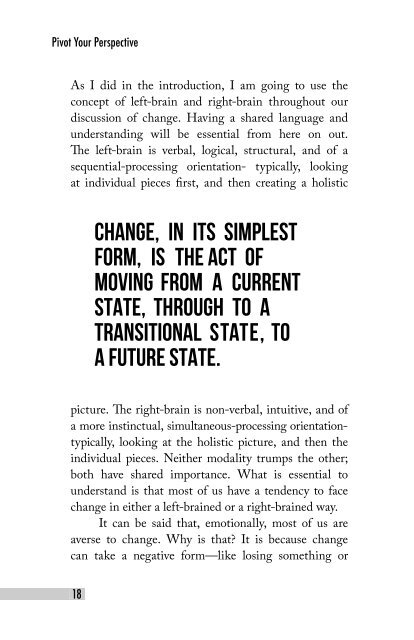PivotYourPerspectiveSAMPLE
You also want an ePaper? Increase the reach of your titles
YUMPU automatically turns print PDFs into web optimized ePapers that Google loves.
Pivot Your Perspective<br />
As I did in the introduction, I am going to use the<br />
concept of left-brain and right-brain throughout our<br />
discussion of change. Having a shared language and<br />
understanding will be essential from here on out.<br />
The left-brain is verbal, logical, structural, and of a<br />
sequential-processing orientation- typically, looking<br />
at individual pieces first, and then creating a holistic<br />
Change, in its simplest<br />
form, is the act of<br />
moving from a current<br />
state, through to a<br />
transitional s tat e , to<br />
a future state.<br />
picture. The right-brain is non-verbal, intuitive, and of<br />
a more instinctual, simultaneous-processing orientationtypically,<br />
looking at the holistic picture, and then the<br />
individual pieces. Neither modality trumps the other;<br />
both have shared importance. What is essential to<br />
understand is that most of us have a tendency to face<br />
change in either a left-brained or a right-brained way.<br />
It can be said that, emotionally, most of us are<br />
averse to change. Why is that? It is because change<br />
can take a negative form—like losing something or<br />
18








